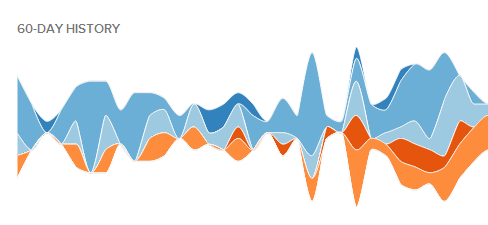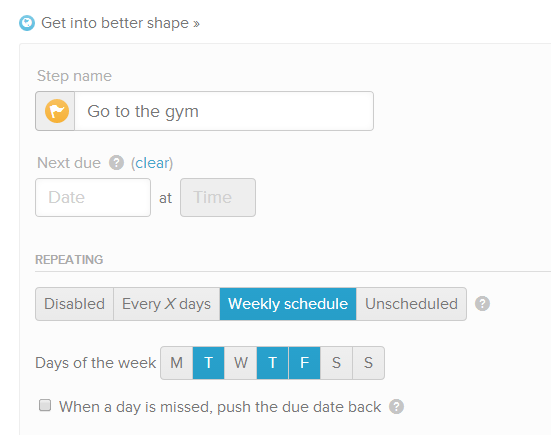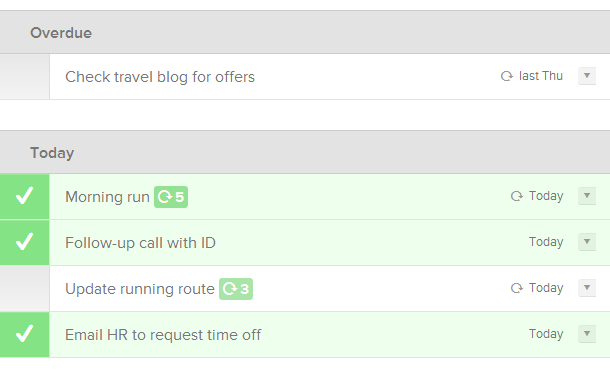Aim to be productive every day
One of the biggest benefits of keeping your activities updated in the To-Do List is that it creates a permanent log of your productivity from day to day.
On the History tab, you'll see a graph is built up from your completions of steps, goals and targets. By default this covers the last 30 days, but you can also go back and look at any point in your history of using Nach.
A great way to stay productive is to aim to do at least one productive thing every day - i.e. at least one step which is helping lead towards your big goals. Just aiming to keep your history graph busy and active can provide daily motivation to work through your to-do list.

Balance your life
You can take this idea even further by breaking your goals up into categories that represent that different aspects of your life, and aiming to complete at least one step from each category each day.
This is a great way to make sure that you're not exercising tunnel vision and only focusing on one part of your life whilst neglecting others (e.g. putting in lots of effort into your job at the expense of your health).
Once you have categories set up, you can use the Graphs page to see how many steps you've completed from each category. The graph should be able to give you a good representation of where you're really focusing your attention, and can be extremely useful to reflect on.

Stay disciplined with repeating steps
As you're setting up your goals, you'll no doubt end up breaking some of them down into the type of steps which need to be done many times before they lead to the desired outcome, such as practicing something that builds up a skill.
By clicking the Edit button on a step's page, you'll see the option to turn it into a Repeating step - either something which occurs every X days, or something that follows a set weekly schedule.
Use these options to start building yourself a schedule of small things which you should be doing throughout the week. Even if they don't make a big difference on their own, it's the cumulative effect of doing these repeatedly over a period of several weeks that will make a difference and lead to achieving your bigger goals.

Keep the Overdue list empty
Once you have your Goal Map set up, all that's left is making sure you stick to it. It may be difficult at first, especially if you've set up a lot of repeating steps, but try and complete everything in the Today section of your to-do list each day, and avoid letting anything fall into the Overdue section.
If something does reach the Overdue list, do it at the next possible opportunity. Or if it keeps ending up in Overdue, maybe reassess whether you were being realistic with how frequently you made it repeat - if so, it might be worth editing it and dialing back the frequency.
Postponing a step can push a step's due date back, but when you open up the step's page, you'll see that it leaves a grey "Missed" mark on the step's history. This makes the step history chart a good way to see, at a glance, how well you're sticking to a step's due dates.


